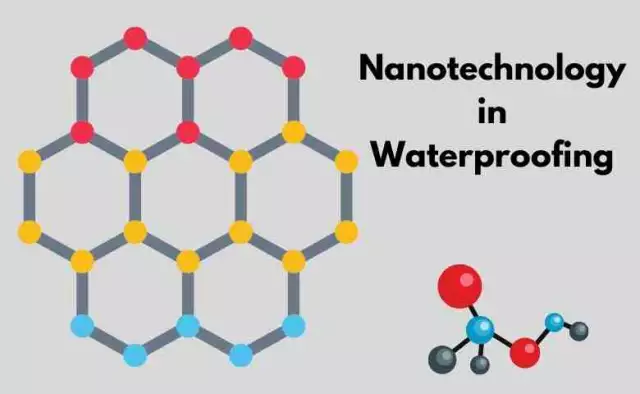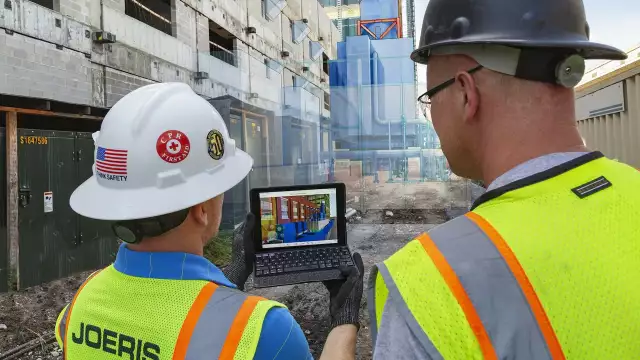Mixed Reality in Construction Industry: Uses, Advantages and Limitations
Mixed Reality in Construction Industry: Uses, Advantages and Limitations
Mixed Reality in Construction Industry: Uses, Advantages and Limitations
Mixed reality (MR) is viewed by some as a futuristic notion that has yet to find a place in the building industry. On the other hand, embracing it early on comes with many benefits. Information flow is improved, and work is more efficient with MR technologies. They are intuitive to use because they mimic real life, yet without the constraints of the physical world. This article discusses the mixed reality in the construction industry, its uses, advantages, and limitations.
The post Mixed Reality in Construction Industry: Uses, Advantages and Limitations appeared first on ConstructionPlacements.
You can contact us to get more choices
0
You can contact us to get more choices
Related posts
Mixed Reality in Construction Industry: Uses, Advantages and Limitations
Mixed reality (MR) is viewed by some as a futuristic notion that has yet to find a place in the building industry. On the other hand, embracing it early on comes with many benefits. Information flow is improved, and work is more efficient with MR technologies. They are intuitive to use because they mimic real life, yet without the constraints of the physical world. This article discusses the mixed reality in the constructio...
Mixed Reality in Construction Industry: Uses, Advantages and Limitations
Mixed reality (MR) is viewed by some as a futuristic notion that has yet to find a place in the building industry. On the other hand, embracing it early on comes with many benefits. Information flow is improved, and work is more efficient with MR technologies. They are intuitive to use because they mimic real life, yet without the constraints of the physical world. This article discusses the mixed reality in the constructio...
Mixed Reality in Construction Industry: Uses, Advantages and Limitations
Mixed reality (MR) is viewed by some as a futuristic notion that has yet to find a place in the building industry. On the other hand, embracing it early on comes with many benefits. Information flow is improved, and work is more efficient with MR technologies. They are intuitive to use because they mimic real life, yet without the constraints of the physical world. This article discusses the mixed reality in the constructio...
Mixed Reality in Construction Industry: Uses, Advantages and Limitations
Mixed reality (MR) is viewed by some as a futuristic notion that has yet to find a place in the building industry. On the other hand, embracing it early on comes with many benefits. Information flow is improved, and work is more efficient with MR technologies. They are intuitive to use because they mimic real life, yet without the constraints of the physical world. This article discusses the mixed reality in the constructio...
Augmented Reality (AR) in Construction Industry: Uses and Applications
Augmented Reality (AR) is a type of technology that alters reality by adding or overlaying virtual information. AR technology can be used to provide instructions for construction workers on-site, as well as provide a visual representation of the finished product. This article discusses the uses, applications, and limitations of Augmented reality in the construction industry.
The post Augmented Reality (AR) in Construction Ind...
Augmented Reality (AR) in Construction Industry: Uses and Applications
Augmented Reality (AR) is a type of technology that alters reality by adding or overlaying virtual information. AR technology can be used to provide instructions for construction workers on-site, as well as provide a visual representation of the finished product. This article discusses the uses, applications, and limitations of Augmented reality in the construction industry.
The post Augmented Reality (AR) in Construction Ind...
Augmented Reality (AR) in Construction Industry: Uses and Applications
Augmented Reality (AR) is a type of technology that alters reality by adding or overlaying virtual information. AR technology can be used to provide instructions for construction workers on-site, as well as provide a visual representation of the finished product. This article discusses the uses, applications, and limitations of Augmented reality in the construction industry.
The post Augmented Reality (AR) in Construction Ind...
Augmented Reality (AR) in Construction Industry: Uses and Applications
Augmented Reality (AR) is a type of technology that alters reality by adding or overlaying virtual information. AR technology can be used to provide instructions for construction workers on-site, as well as provide a visual representation of the finished product. This article discusses the uses, applications, and limitations of Augmented reality in the construction industry.
The post Augmented Reality (AR) in Construction Ind...
Nanotechnology in Waterproofing: Uses, Advantages and Limitations
Waterproofing is an important part of providing a controlled environment in the construction of a building envelope. Water-resistant and occasionally waterproof roof covering materials, siding, foundations, and all penetrations through these surfaces are required. This article discusses the uses, advantages, and limitations of nanotechnology in waterproofing.
The post Nanotechnology in Waterproofing: Uses, Advantages and Limitatio...
Nanotechnology in Waterproofing: Uses, Advantages and Limitations
Waterproofing is an important part of providing a controlled environment in the construction of a building envelope. Water-resistant and occasionally waterproof roof covering materials, siding, foundations, and all penetrations through these surfaces are required. This article discusses the uses, advantages, and limitations of nanotechnology in waterproofing.
The post Nanotechnology in Waterproofing: Uses, Advantages and Limitatio...
Nanotechnology in Waterproofing: Uses, Advantages and Limitations
Waterproofing is an important part of providing a controlled environment in the construction of a building envelope. Water-resistant and occasionally waterproof roof covering materials, siding, foundations, and all penetrations through these surfaces are required. This article discusses the uses, advantages, and limitations of nanotechnology in waterproofing.
The post Nanotechnology in Waterproofing: Uses, Advantages and Limitatio...
Nanotechnology in Waterproofing: Uses, Advantages and Limitations
Waterproofing is an important part of providing a controlled environment in the construction of a building envelope. Water-resistant and occasionally waterproof roof covering materials, siding, foundations, and all penetrations through these surfaces are required. This article discusses the uses, advantages, and limitations of nanotechnology in waterproofing.
The post Nanotechnology in Waterproofing: Uses, Advantages and Limitatio...
Augmented reality (AR) has proven its value across multiple industries and has demonstrated that it can be leveraged beyond the realms of gaming and entertainment. As such, the AR/VR market is expected to see a 77% CAGR from 2019-2023. In retail, brands are adopting augmented reality to enrich the online shopping experience, allowing shoppers to […]
The post The Power of Augmented Reality (AR) in Construction appeared first on Digital Builder.
Augmented reality (AR) has proven its value across multiple industries and has demonstrated that it can be leveraged beyond the realms of gaming and entertainment. As such, the AR/VR market is expected to see a 77% CAGR from 2019-2023. In retail, brands are adopting augmented reality to enrich the online shopping experience, allowing shoppers to […]
The post The Power of Augmented Reality (AR) in Construction appeared first on Digital Builder.
What is construction robotics? Its Uses and Applications in Construction Industry
Construction robotics is a technology that has been around for decades but has only recently seen a boom in its popularity. This piece breaks down the different uses and applications of construction robots in the construction industry.
The post What is construction robotics? Its Uses and Applications in Construction Industry appeared first on ConstructionPlacements.
What is construction robotics? Its Uses and Applications in Construction Industry
Construction robotics is a technology that has been around for decades but has only recently seen a boom in its popularity. This piece breaks down the different uses and applications of construction robots in the construction industry.
The post What is construction robotics? Its Uses and Applications in Construction Industry appeared first on ConstructionPlacements.
Augmented reality (AR) and virtual reality (VR) aren’t just buzzwords, and these tools are no longer reserved for construction technologists like BIM and VDC managers. These technologies have come a long way in just a few short years and these days, they have practical use cases that owners and builders alike can benefit from at […]
The post Digital Builder Ep. 19: 3 Takeaways on Augmented Reality (AR) and Virtual Reality (VR) in Construction appeared first on Digital Builder.
Augmented reality (AR) and virtual reality (VR) aren’t just buzzwords, and these tools are no longer reserved for construction technologists like BIM and VDC managers. These technologies have come a long way in just a few short years and these days, they have practical use cases that owners and builders alike can benefit from at […]
The post Digital Builder Ep. 19: 3 Takeaways on Augmented Reality (AR) and Virtual Reality (VR) in Construction appeared first on Digital Builder.
Virtual reality in Construction industry: All you need to know about
Virtual reality (VR) is a new technology used by many industries. It has become the newest trend in construction because it offers much more than just virtual reality. It can help with design, modeling, and other processes in the construction industry. Read more to need to know about virtual reality in the construction industry.
The post Virtual reality in Construction industry: All you need to know about appeared first on Cons...
Virtual reality in Construction industry: All you need to know about
Virtual reality (VR) is a new technology used by many industries. It has become the newest trend in construction because it offers much more than just virtual reality. It can help with design, modeling, and other processes in the construction industry. Read more to need to know about virtual reality in the construction industry.
The post Virtual reality in Construction industry: All you need to know about appeared first on Cons...



